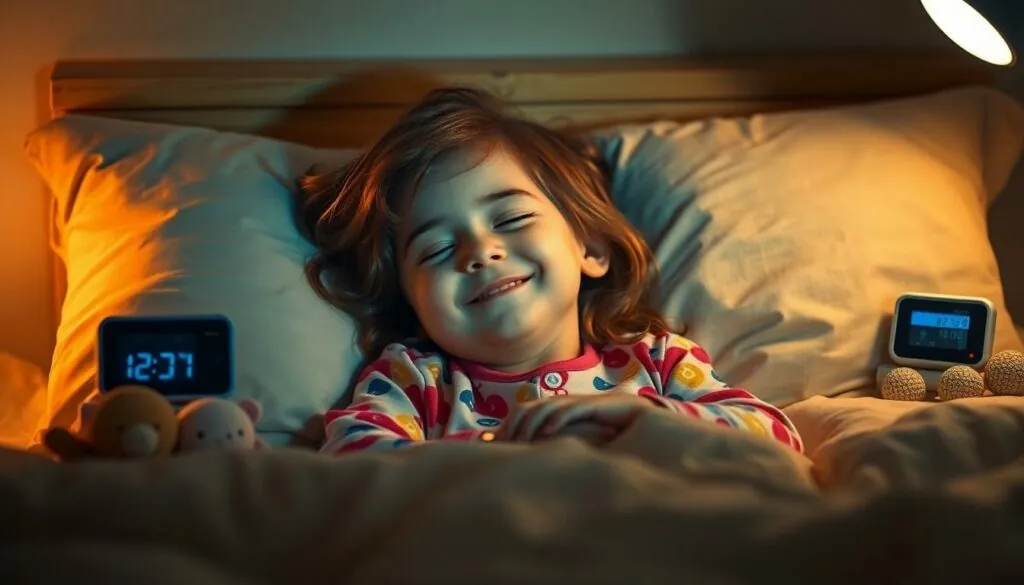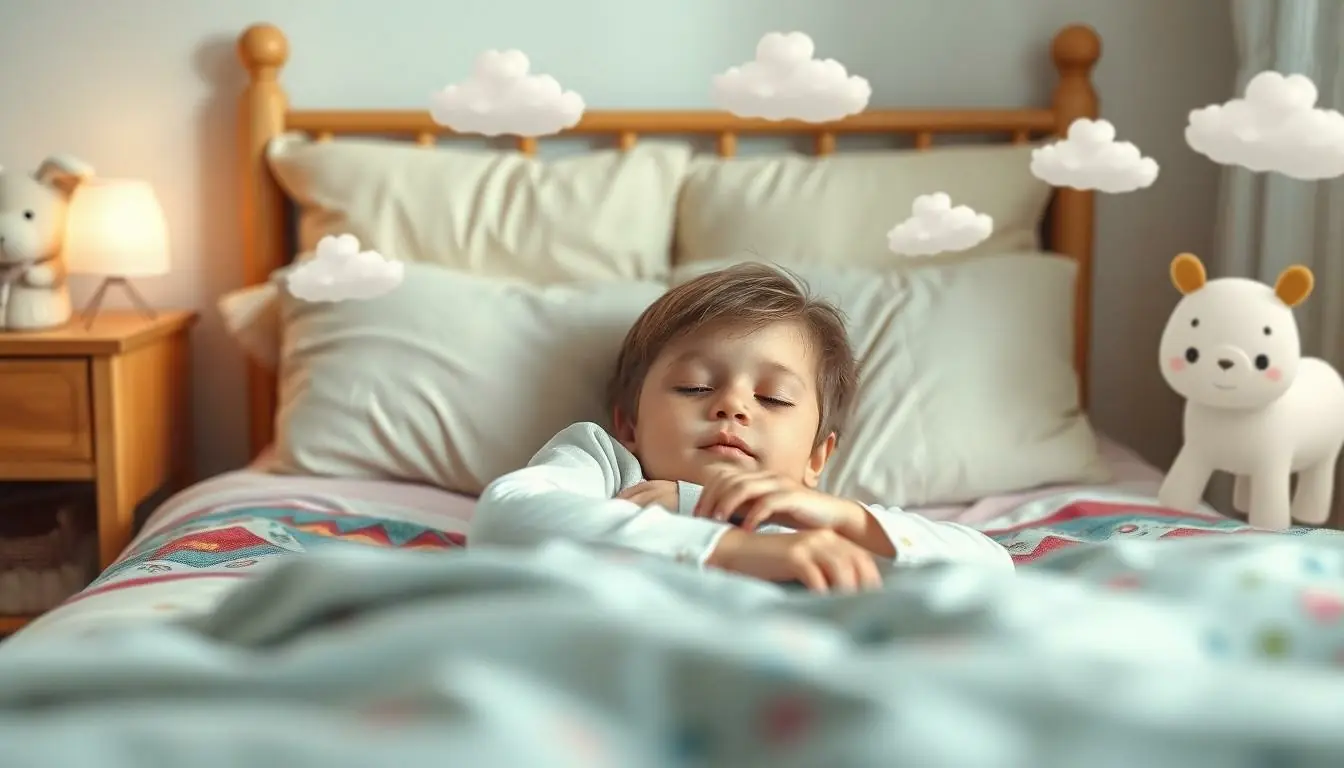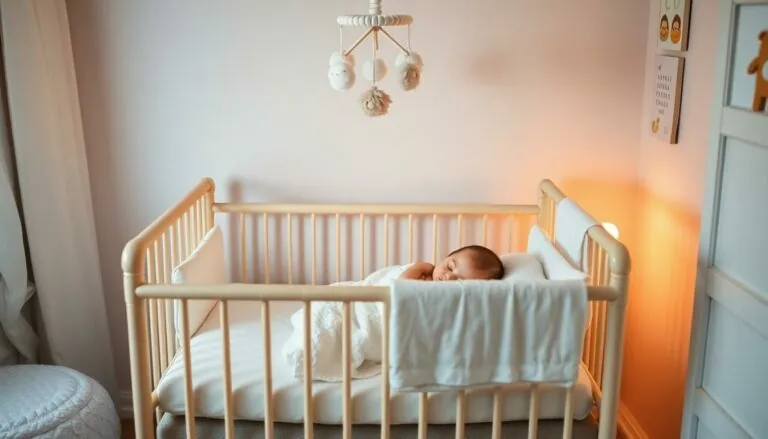Table of Contents
ToggleIn a world buzzing with distractions and bedtime battles, getting kids to sleep can feel like a Herculean task. Enter guided sleep meditation—a magical solution that transforms the nightly routine from chaos to calm. Imagine your little ones drifting off to dreamland, not with a fight, but with a smile, as they embark on enchanting journeys led by soothing voices.
Understanding Guided Sleep Meditation For Kids
Guided sleep meditation offers children a gentle and structured approach to winding down before bedtime. This technique helps ease anxiety and fosters relaxation, ensuring a smoother transition into sleep.
What Is Guided Sleep Meditation?
Guided sleep meditation involves listening to calming narratives that inspire imagination while promoting tranquility. Typically, these sessions last between 10 to 30 minutes, allowing children to relax their minds. A narrator leads the meditation, using soothing language to encourage mindfulness and focus on breathing. This method incorporates visualization techniques that help children imagine peaceful scenes, enhancing their ability to drift into sleep.
Benefits Of Guided Sleep Meditation For Kids
Guided sleep meditation provides numerous benefits that contribute to children’s overall well-being. Improved sleep quality is one result of regular practice, as it aids children in falling asleep faster and staying asleep longer. Reducing anxiety and stress is another significant advantage; meditation cultivates emotional resilience by teaching valuable relaxation techniques. Enhanced focus and concentration during the day stem from better sleep patterns, allowing children to engage more effectively in school activities. Additionally, guided sleep meditation fosters a sense of comfort and security, helping children feel empowered in their nighttime routines.
Techniques In Guided Sleep Meditation
Guided sleep meditation incorporates several techniques to promote relaxation and ease children into sleep. Two effective methods involve visualizations and breathing exercises.
Visualizations
Visualizations encourage children to imagine peaceful scenes and comforting stories. They might picture floating on a gentle cloud or exploring a magical forest filled with friendly animals. With engaging guidance, children create vivid mental images that transport them away from daily stressors. Each visualization should be age-appropriate, captivating attention while easing tension. Narrators can use soothing voices and descriptive language to enhance the experience. This practice not only fosters creativity but also develops mindfulness, making it an essential tool during bedtime routines.
Breathing Exercises
Breathing exercises help children regulate their emotions and calm their minds. Simple techniques, like the “balloon breath,” involve inhaling deeply through the nose and exhaling slowly through the mouth. These exercises guide children to focus on their breath, promoting a sense of peacefulness. Regular practice can reduce anxiety levels, leading to improved sleep quality. Parents might encourage their children to count breaths during these exercises, making the process engaging and interactive. Integrating breathing exercises into guided sleep meditation establishes a calming atmosphere that enhances relaxation and supports a smooth transition to sleep.
How To Implement Guided Sleep Meditation At Home
Implementing guided sleep meditation at home involves creating an inviting atmosphere and selecting suitable resources that cater to children’s needs.
Creating A Calming Environment
A calming environment promotes effective sleep meditation. Dim the lights to create a serene atmosphere, encouraging relaxation. Use soft, comfortable bedding to help children feel secure and cozy. Reducing noise allows for focus during meditation, so consider using white noise machines or calming music. Aromatherapy with scents like lavender can further enhance relaxation. Establishing a consistent bedtime routine builds familiarity and comfort, supporting a peaceful transition to sleep. Many find that a specific bedtime ritual, such as reading or breathing exercises, signals it’s time for meditation and sleep.
Choosing The Right Meditation Resources
Selecting the right meditation resources simplifies the experience for children. Explore guided sleep meditation recordings tailored for young audiences. Numerous apps and websites offer collections of soothing narratives. Focus on narratives that encourage imagination and creativity, as these captivate children’s attention. Look for gentle voices that comfort rather than distract. Ensure the duration matches the child’s attention span; shorter sessions often work better for younger children. Parents often benefit from previewing materials to assess suitability, ensuring a positive experience that promotes restful sleep.
Popular Guided Sleep Meditation Programs For Kids
Numerous resources are available for guided sleep meditation, catering specifically to children’s needs.
Apps And Audio Narratives
Apps provide a convenient way to access guided sleep meditation. Headspace for Kids offers themed meditations tailored to various emotions, helping children connect with their feelings. Calm boasts an extensive selection of sleep stories narrated by soothing voices, designed to lull kids to sleep. Insight Timer features a dedicated section for children’s meditations, allowing users to explore different techniques like visualization and breathing exercises. These apps often include age-appropriate content that engages kids while promoting relaxation, making bedtime routines smoother and more enjoyable.
YouTube Channels And Videos
YouTube channels serve as an excellent platform for guided sleep meditation for kids. Cosmic Kids Yoga combines storytelling with gentle physical activity, creating a fun bedtime ritual. The Mindful Kids channel offers short, calming meditations specifically designed for children, focusing on relaxation and mindfulness. Another popular option, The Calm Kids Channel, features sleep stories and meditations that help children unwind at the end of the day. Each channel uses engaging visuals and soothing sounds to capture children’s attention, ensuring an effective transition to a restful night’s sleep.
Conclusion
Guided sleep meditation offers a transformative approach to bedtime for children. By integrating soothing narratives and mindfulness techniques, it not only eases the transition to sleep but also nurtures emotional well-being. Parents can create a calming environment that enhances relaxation and fosters a sense of security.
With the right resources and a consistent routine, bedtime can become a cherished part of the day. As children embark on their imaginative journeys, they gain valuable tools for managing anxiety and stress. Embracing guided sleep meditation can lead to more restful nights and brighter days ahead.








